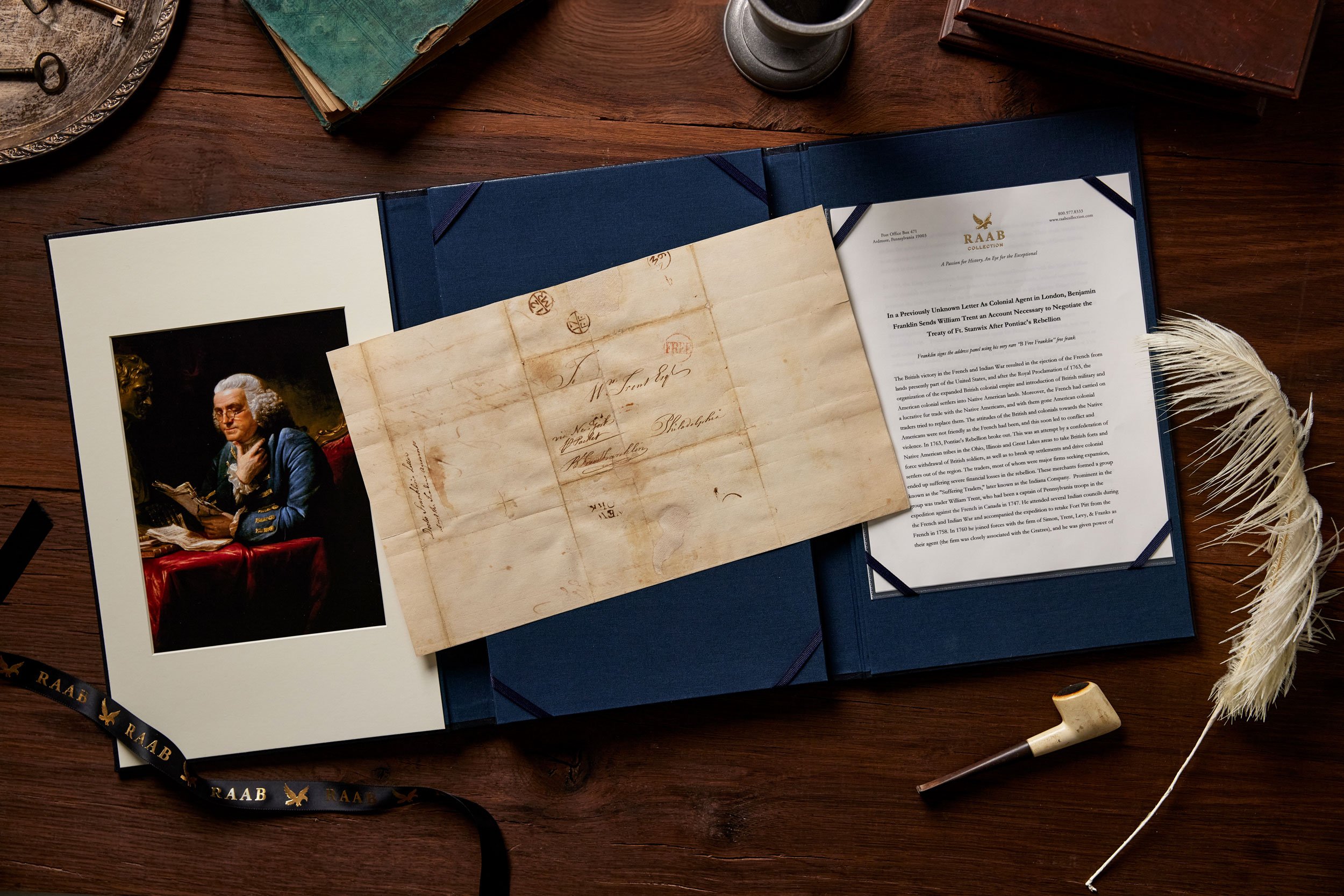
Founding Father Benjamin Franklin signed most of his letters “B. Franklin” or “Benj. Franklin.” But some of them, especially those written in the years leading up to the Revolutionary War, were signed “B Free Franklin.” Why?
Nathan Raab, an internationally renowned expert of historical documents whose collection just put one such letter up for sale, has an idea. He believes the signature may have been intended as a secret message demonstrating Franklin’s loyalty to the revolutionary cause—a loyalty which, owing to his having worked for the British government and spent extended periods of time in London, was sometimes called into question.
“As a diplomat,” explains an article published by the Smithsonian National Postal Museum, “Franklin was often accused by both sides as being partisan against their interests – too ‘British’ for the Americans and too “American” for the British. He shows his revolutionary spirit here by transposing his usual frank and signing the cover ‘B Free Franklin.’”
Franklin’s special signature may have also been a play on the historical practice of free franking. Originating in Britain’s House of Commons during the early 17th century, it refers to the privilege of sending mail with one’s signature as opposed to a postage stamp. In the Old World, this privilege was reserved mainly for Members of Parliament and bishops, while in the US it was granted to congressmen, presidents, and cabinet secretaries until its abolition in 1873.
Benjamin Franklin’s letter has the costumery circular red frank stamp reading “Free.” Photo: Raab Collection.
Appointed to various positions in the nascent US government— including Postmaster General, President of Pennsylvania and ambassador to France and Sweden—Benjamin Franklin was able to make full use of the free frank privilege, sending his mail free of charge.
And yet, despite the innumerable amount of free frank letters he must have written during his lifetime, terribly few of them survived, explaining why Raab’s document, which once belonged the Townsends, an early American merchant family, has a whopping estimated value of $235,000.
Raab’s letter was signed on February 13, 1768, when Franklin was working as the Postmaster General of British America in London. According to the Raab Collection, the document contained information needed to settle a territorial dispute between the Iroquois tribe and Great Britain. This dispute was eventually resolved through the 1784 Treaty of Fort Stanwix, which drew the boundaries for the states of Virginia, Kentucky, West Virginia, and Pennsylvania.
For those interested, the letter can be purchased on the Raab Collection’s website for the aforementioned sum $235,000—plus $14,100 in tax. Shipping and insurance are fortunately listed as complementary.